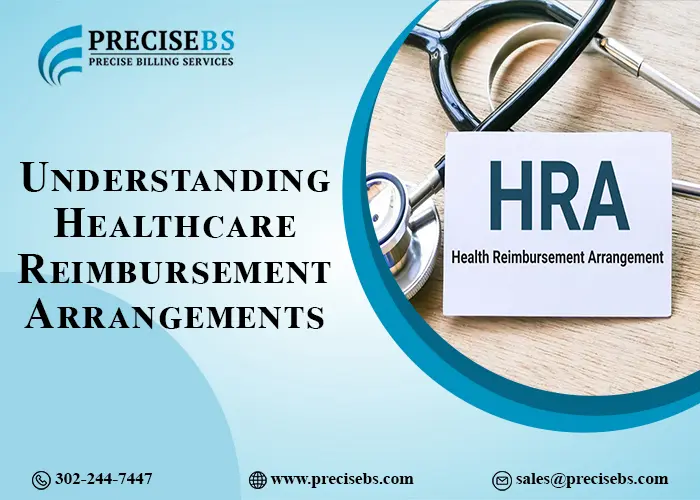In today’s world of evolving healthcare options, both employers and employees are looking for flexible, cost-effective ways to manage healthcare expenses. One powerful tool that has gained popularity is the Healthcare Reimbursement Arrangement (HRA). An HRA allows employers to offer tax-free reimbursements to their employees for eligible medical expenses. This guide provides an in-depth look at how HRAs work, their benefits, and how they can be a smart choice for both employers and employees seeking personalized, tax-advantaged health coverage options.
What is a Healthcare Reimbursement Arrangement (HRA)?
A Healthcare Reimbursement Arrangement, or HRA, is an employer-funded health benefit account that reimburses employees for out-of-pocket medical expenses and, in some cases, health insurance premiums. Unlike Health Savings Accounts (HSAs), HRAs are entirely funded by the employer, meaning employees do not contribute any of their own money. The amount contributed by the employer to the HRA is predetermined, offering tax-free medical reimbursements that enhance employees’ healthcare coverage while reducing tax liability for employers.
Types of HRAs Available
There are several types of HRAs available, each designed to meet different needs for employers and employees. Here are the primary types:
- Individual Coverage HRA (ICHRA):
Suitable for employers of all sizes, the ICHRA allows employers to reimburse employees for individual health insurance premiums and qualified healthcare expenses. Employees have the freedom to choose individual coverage healthcare plans tailored to their needs. - Qualified Small Employer HRA (QSEHRA):
Ideal for small businesses with fewer than 50 employees, the QSEHRA provides a way for small employers to offer tax-free health reimbursements without the obligation to provide a group health plan. - Group Coverage HRA (GCHRA):
Designed to supplement existing group health insurance plans, a GCHRA provides additional coverage for deductibles and copays, reducing out-of-pocket expenses for employees.
Setting Up an HRA Account
For employers interested in establishing an HRA account, it’s important to understand the basics of HRA account setup. Here’s a step-by-step guide to creating a compliant, effective HRA:
- Determine HRA Contributions:
Decide how much your business will contribute to each employee’s HRA. Contributions are flexible and can be adjusted annually based on business needs and employee requirements. - Select a Healthcare Reimbursement Arrangement Provider:
Working with a trusted HRA administrator can simplify the process of managing accounts, processing reimbursements, and ensuring tax compliance. - Educate Employees on Usage:
Employers should ensure that employees understand how to use their HRA, including eligible expenses, reimbursement processes, and submission requirements for tax-free medical reimbursements.
Key Benefits of an HRA for Employers and Employees
HRAs offer unique benefits for both employers and employees, making them a popular choice for companies looking to enhance healthcare benefits.
Benefits for Employers
- Cost Control:
Employers control their contributions, providing a predictable healthcare expenditure. - Tax Savings:
Employer contributions are tax-deductible, reducing overall payroll taxes. - Attractive Employee Benefits:
Offering an HRA as part of a benefits package can help attract and retain talented employees by providing personalized health coverage.
Benefits for Employees
- Tax-Free Reimbursements:
HRA reimbursements are tax-free for employees, making them a valuable tool for covering medical expenses without added tax burden. - Flexibility in Healthcare Choices:
With options like the ICHRA, employees can select individual plans that best suit their needs rather than being limited to a one-size-fits-all group plan. - Coverage for Qualified Expenses:
HRAs can cover a range of healthcare costs, including copayments, prescriptions, and even certain insurance premiums, helping employees manage expenses effectively.
HRA vs. HSA: Which is Better?
Both HRAs and Health Savings Accounts (HSAs) are tax-advantaged accounts, but they differ significantly:
- HRA: Entirely employer-funded, HRAs offer tax-free reimbursements for medical expenses, without requiring employee contributions.
- HSA: HSAs require employees to participate in a high-deductible health plan and allow both employer and employee contributions, providing greater flexibility for employee-controlled savings.
Each option offers unique advantages. HRAs are ideal for businesses that want to retain control over contributions, while HSAs are suitable for employees who wish to build their own healthcare savings over time.
Steps in the HRA Reimbursement Process
For employees to benefit from their HRA, understanding the reimbursement process is crucial:
- Incur Qualified Expenses:
Employees must first pay for eligible healthcare expenses out-of-pocket. - Submit Claims for Reimbursement:
Employees submit receipts and documentation to the HRA administrator, ensuring compliance with eligible expenses. - Receive Reimbursements:
Once verified, employees receive reimbursements, directly benefiting from the tax-free funds provided by the employer.
Why Choose an HRA? A Quick Recap
HRAs provide a flexible, tax-advantaged solution for both employers and employees. By setting up an HRA, employers gain control over healthcare spending while offering an attractive benefit. Employees, on the other hand, enjoy tax-free health spending with coverage that can be tailored to individual healthcare needs.
Start Reaping the Benefits of an HRA
If you’re an employer looking to control healthcare costs while offering valuable benefits, or an employee wanting more freedom in managing healthcare expenses, an HRA may be the ideal solution. Begin by consulting with a reputable HRA provider to understand your options and start setting up a plan that suits your needs.
Ready to Learn More? Contact a Healthcare Reimbursement Arrangement Specialist Today!
Explore how an HRA can empower your healthcare decisions and contribute to a healthier, more financially secure future for both employers and employees.

